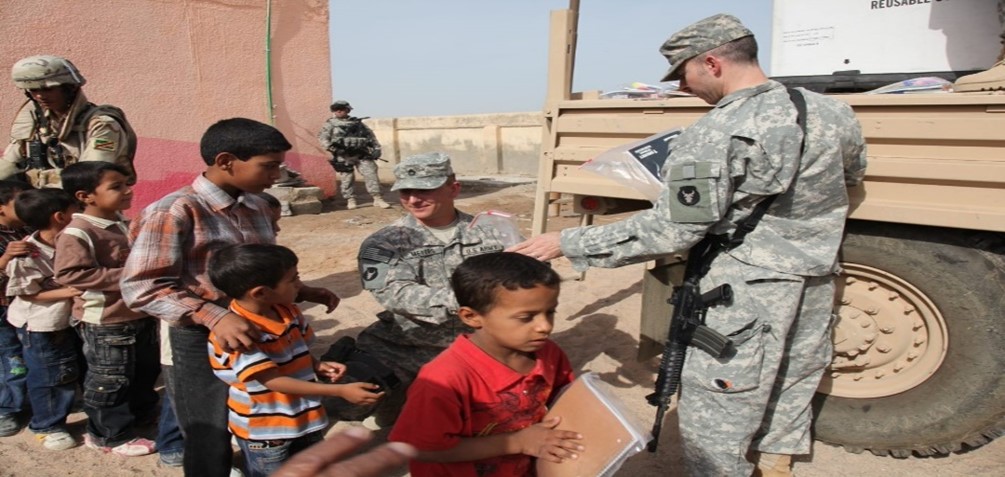
How can you compare a controversial ten-year occupation with a worldwide-pandemic? You can when you take in effect the emotional and psychological aftereffects from catastrophic events. No comparison is perfect, and the physical desecration of a war-torn country and the emotional toll it takes on its people is in many aspects in a league all by itself. Where the analogies hold true is with factors that are difficult to see but can be managed if identified and prioritized. Measuring observations from my time in the Middle East and through my experiences in the engagement industry, I documented four key factors that affects a population amidst any type of extreme change and their end objectives:
- Curbing Burnout: whether war-weary or stressed from overloaded expectations, creating hope, and envisioning a more positive future state gives people newfound energy.
- Removing Isolation: spearheaded by senior leader engagements and aligning common purposes through consistent communications with measurable expectations.
- Facing Fear: physical (threats of unwelcomed invaders) and psychological (trust issues).
- Motivating the Apathetic: re-evaluating generational and cultural identifiers allows employees to feel welcomed, valued, and creates objectives.
I am writing this paper to share key lessons learned from my experiences in Iraq because I believe many of those best practices can be applied to employees today as we create a post-COVID workplace. As businesses pick up the pieces of COVID’s devastation, one of the priorities will certainly be restoring their workforces. We faced similar tasks in Iraq, but when faced with the freedom of a democratic system in place, there was much resistance due to these four key factors. Today’s organizations face similar challenges as staffing demands greatly outweigh the supply of people driven to return to work. Firms that find ways to resource and synergize their people through modern engagement will ultimately build cultural value for all their stakeholders.
From 2009 to 2010, I had the privilege to serve my country in the Middle East during Operation Iraqi Freedom. Having volunteered for a unique nation-building assignment with the 34th Infantry Division’s Civil Military Operations cell, I was informed in 2008 that I would serve as a Liaison Officer at the United States Embassy and work Special Projects throughout Southeastern Iraq. Arriving in Baghdad in May of 2009, my initial impressions of the landscape were almost exactly as I had imagined. The view of the ancient city, with the intensity of the sun beating down on more than seven million inhabitants, stretched to the horizon from my door-side view in the UH-60 Blackhawk Helicopter. As we descended closer to our helipad destination, I gained a more intimate perspective of buildings and their surrounding areas that were decimated due to the onslaught of our shock-and-awe bombardments.
Prior to our arrival in Iraq, we trained for five months to ensure we were as ready as we could be for the responsibility of leading our governance and economically centric civil capacity rebuilding model. One of the hardest factors for me to grasp was that not too long ago this was one of the richer countries in the world. It was evident that the city’s glory days were far behind it with the deprivation of normalcy in an area ripe with chaos.
To put this in better perspective, in 2008 the country of Kuwait, bordering directly south of Iraq, their Dinar was about 1 to 1 in value with the American Dollar. Iraq, a country with more oil assets and a manageable population to spread the wealth, their Dinar only held a value of 1,250 dollars for every 1 Dinar. As a Field Ordering Officer, I carried $28 million Iraqi Dinar in a backpack as I targeted local vendors who housed mission essential items we could purchase. This was intended to build business relationships and assist in stimulating economic activity; unfortunately for the Iraqi’s, that amount of money only held a value of $25,000 American Dollars. Parts of the country were austere beyond my comprehension, and for the first three months we met resistance, hesitation, and fear from the local population.
There were challenges in the path of us accomplishing our missions as we quickly learned that motivating and influencing a people, who simply wanted freedom, was arduous with the absence of trust. Building rapport and sustaining fruitful relationships has a high degree of difficulty for a population who lived under a tyrannical ruler for the last thirty plus years, were currently living the last six under foreign occupation, and were faced with regular violent insurgence activity.
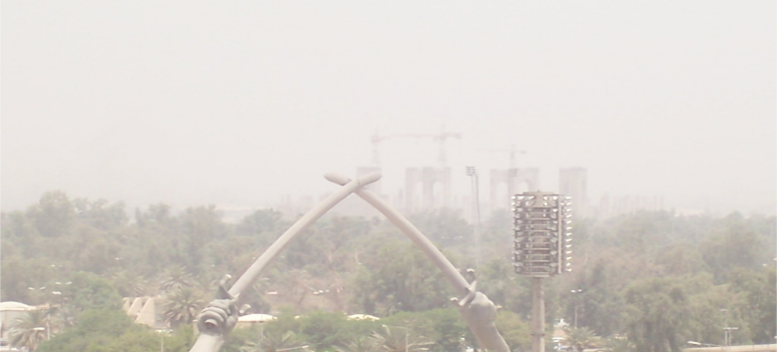
Fast forward to 2021 and the unique situation our American workforce faces today: after a year of unparalleled economic unrest and employment volatility in our modern times, we are finally seeing positions for work across all industries more available and abundant. You would think this is a good problem for us to have; however, today organizations are trying to find solutions as to why they cannot fill many of these positions. The deep-rooted problems of today’s inability and difficulties to hire and retain talent go well beyond unemployment and other fiscal aid stimulus packages. As it was ten years ago in a different part of the world, today’s modern workforce is experiencing an adjustment to traumatic interruptions into the rhythmic flow of our free lives.
Through our missions, we found the Iraqi People were more productive and influenced when imbedded in projects they could call their own. As firms rebuild in the post-pandemic world, similar “people” investments in engagement resources will help employees to psychologically reset and refocus, collaborate to forge efficient teams, and grow the organization with a motivated and resolute spirit.
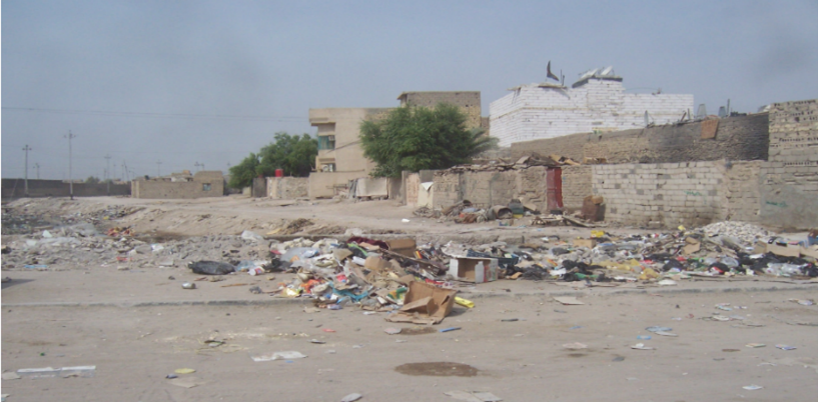
Connections between Operation Iraqi Freedom and the Global COVID Pandemic:
There are numerous factors that play into a business or a country’s socioeconomic culture, and it can be unnerving how it does not take much to throw our cycles out of balance. In early 2020, the world was on full alert to the potential spread of a deadly disease with no known path to immunization. As the pandemic introduced itself in the coming months and built a presence in most areas of the world, we suffered economic and social aftereffects that altered our predictable ways of life. We all had a first-hand view of the fallout as our national stock indices plummeted, unemployment ran rampant, and many who were fortunate enough to keep jobs were relocated to working out of their homes. Where many businesses and industries, such as service-related firms, needed to make these strategic level decisions to keep their organizations alive, the negative consequences of such radical changes were blatantly noticeable.
Those asked to carry a much heavier burden of work, such as our amazing medical professionals, suffered widespread burnout. Many who were deployed to work at their homes became isolated, and furloughed employees lost a semblance of trust in their organizational leaders. Among these, fear was the predominant denominator fueling anxiety, anger, and despair. Moving a year forward from the pandemic’s inception, we now have a clearer vision towards economic recovery as the population marches towards herd immunization. Unfortunately, the pendulum has completely swung in a direction where many industries find themselves in an overwhelming need for labor. Reduced immigration, one of our slowest annual birthrates in recorded history, and technologically advanced production resources requiring demand for a more skilled workforce than we can currently supply, raises a gigantic red flag for the present and for long-term strategic planning.
Rewind the clock to 2003: President Bush declared “Mission Accomplished” on an American Aircraft Carrier, the brutal Iraqi dictator Saddam Hussein was in custody, and our country had an optimistic fervor after mending from the shockwaves created from one of the most destructive attacks on our free society’s soil. That feeling of resolve in the Middle East was quickly diminished with the rise of the improvised explosive device, a more motivated insurgency, and doubt from our invasion’s purpose as we were unable to locate weapons of mass destruction. As the rules of engagement changed for coalition forces, our leaders realized something needed to be done to gain the trust of this war-weary Iraqi population.
General David Petraeus introduced a nation-building model which relied on non-kinetic civil capacity actions just as much as traditional lethal warfare. This was the playbook we utilized when the 34th Infantry Division deployed to Iraq for rotation OIF 09-11. We were all walking into a situation where we had little experience with this revolutionary concept of Army Operations. The 34th ID trained with the British Army who occupied much of Southeastern Iraq from 2003-2008. The British received so much daily indirect rocket fire from insurgents that they built coffin-like sleeping areas under the ground. It was evident they did not heavily invest in building relationships with key leaders in that part of the country, and in turn, there was a strong hostility between the native population and the occupying forces.
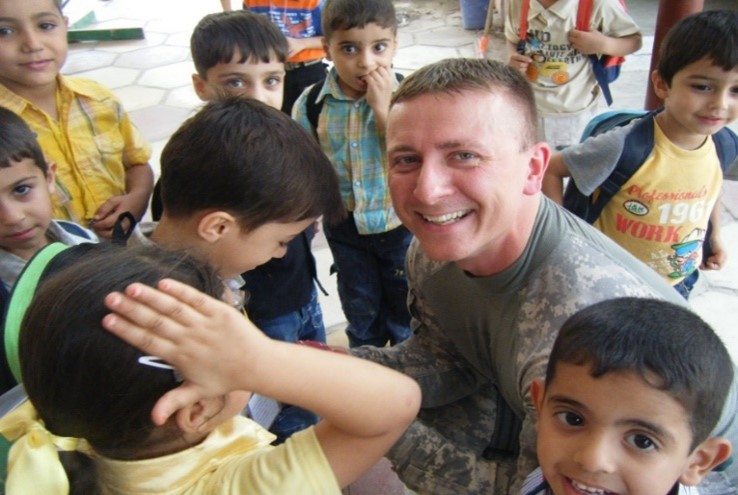
Months after major public events and large gatherings were cancelled, COVID’s presence was growing. It had no mercy for doubt, hubris, and would not be ignored even if some leaders around the world proclaimed the disease would be short lived. Right around the summer surge of positive infections and deaths is when I saw similarities in the socio-economic psyche of what I saw in Iraq. When one is welcomed by unwelcomed invaders, emotional turmoil and distrust are immediate causal effects. As sincere as our rebuilding intentions were, we were offering tithes of goodwill…while we were armed with loaded weapons.
As mentioned earlier, Iraq was at one point wealthy, and before the invasion, they were more sufficient than most nations. The Iraqis were so reliant on outside contractors from poorer nations that they had little need to train their people with labor skills. When the war started and immigration halted, the Iraqi people suddenly had to get in the workforce and learn trades to maintain a healthy infrastructure. American forces had seemingly blank checkbooks and unlimited resources to rebuild their country, but the problem was we were not making strides with placing these people into positions of need.
Providing purpose, direction, and motivation to perform essential tasks was one of the most difficult aspects of our mission. Apathy, just as much as fear, was rampant as the people had learned to live in their homes (much like us with COVID) and lost much desire to seek something greater than what they were currently experiencing.
In 2020, for as much as we all wanted to see our families, friends, or just participate in normal activities, we had no idea who was or was not infected with the novel coronavirus. In Iraq, a similar fear existed as everyone who stepped out of their door faced a high degree of mortal risk. Other occurrences between the two timelines can be correlated with the psychological trauma across the populations. A loss of faith in coalition leadership occurred when the government immediately disregarded and disbanded the current serving Iraqi police and military forces shortly after Saddam Hussein’s capture. As the war intensified, many skilled laborers the country was so reliant on relocated, and families were forced to take shelter in hotbed areas of resistance and fighting.
I would be remiss not to acknowledge our service men and women, the best America has to offer, as their ability to radically adapt to the situation was nothing short of incredible. Before nation building was relevant, we were trained and indoctrinated into decision making and tactical processes driven from the United States Army for invading and occupying foreign lands with absolute precision. The purpose of the Army is to own the landscape, and we did this through unified codes, credos, and standard operating procedures that required complete obedience to the commands of our higher authorities.
As General Petraeus and other military leaders came to realize, we had to hit a reset button because what we were doing was not efficient enough to meet our end objectives of providing freedom to these people. When nation building was introduced, it put an emphasis on the welfare and future of the people as opposed to owning the Iraqi landmass. Without the support of the people, we never would have gained the rapport and support necessary for us to hand the keys to the country off to them. What we offered was assistance to build a sustainable democratic nation that the Iraqis could call their own, but we had to earn trust through engagement to assist in quashing isolation and burnout.
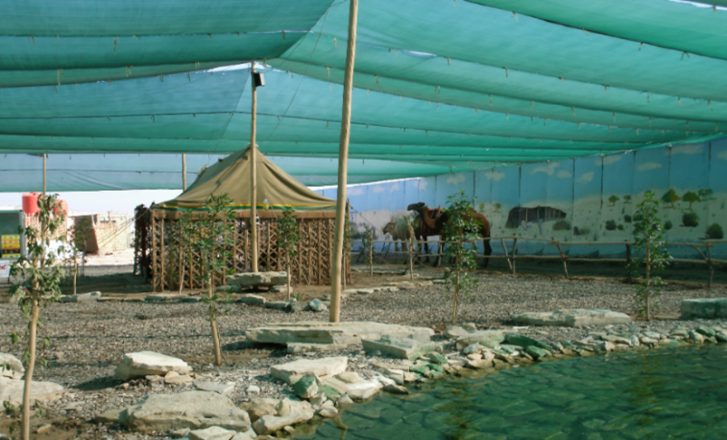
The Bazaar on FOB Basra
The area we took over was a complete mess. It was ripe with apathy; streets were littered with trash as far as we could see, and our base was in shambles. As mentioned earlier, the people did not trust us because we did not give them many reasons to do so. How were we able to produce results with these odds stacked against us? We had complete support and buy-in from our 34 ID leaders to put people first. They paved the way and set high degrees of priorities for our civil military undertakings. “By, with, and through the Iraqi People” was the motto established by our commanding officer, Major General Rick Nash, and everything we did had to be nested within this guiding principle. The first few years after overthrowing Saddam Hussein, our coalition forces threw large sums of money at problems to increase peace and earn the faith of the nation’s inhabitants.
As we found out, this was mostly ineffective as it lacked fundamentals needed to build skills and ethics in functional economies. As the popular parable states, we needed adherence to the principle of “teaching people to fish” instead of “giving fish to people” for a long-term solution. Collaboration and creativity reigned supreme in our operations as we were able to draw on the talents of our National Guard Soldiers. One of our best people in our Civil Military Operations Cell was an Army Ranger with multiple deployment experiences. His skills were not used as an elite warfighter, but they were utilized to teach the Iraqis how to raise bees as this was his occupation in Northwestern Minnesota. Other examples included a lawyer and a c-suite financial executive working to build the Rule of Law and Economic Governance in the area, and our teachers and medical professionals who helped to stand up schools and hospitals. We had a significant advantage to getting our feet in the door with our highly skilled personnel. As the majority of 34 ID Soldiers served in the part-time National Guard, these troops had professional training, experience, and education. This gave us the resources needed to inventively "teach people to fish".
We saw immediate effects from our engagement efforts. The rocket attacks were significantly reduced from what the British faced, we had more free movement through the country, and as meetings progressed with the same leaders, we were building amicable relationships. This was far from a permanent solution as we knew this would take a great deal of time before we comfortably could hand the country back over to them. About halfway through our deployment, the idea was presented to build an authentic Middle Eastern Bazaar (collection of shops in one location) on our base.
We took it a step further and asked to have Iraqis build and run day to day operations after its completion. This required an enormous amount of faith on our senior leaders as the risk of bringing up to fifty Iraqis a day on our base, with limited resources in screening workers, brought apprehension and concern on many of our service people. Our commanding general bought off on the project as he referenced “by, with, and through the Iraqi people”, and in the matter of months, we had a fully functional Bazaar. Without any negative incidents, we provided the people of that area with jobs they could call their own and with resources they built from the ground up.
Soldiers were able to shop for authentic Middle Eastern items, participate in cultural events, and interact with these Iraqi workers daily. Near the end of our deployment, our Civil Military Operations team said goodbye to these people with whom we developed a special bond. Swelled with tears and gratitude from our Iraqi friends, it was obvious to see that not only had our model of “by, with, and through” worked, but that it also was the most effective trust-building courses of action we had performed. We enabled the people of Basra to create something they fully owned and were responsible for, and with this came a shining example for the weary populous that spearheaded trusting and lasting relationships.
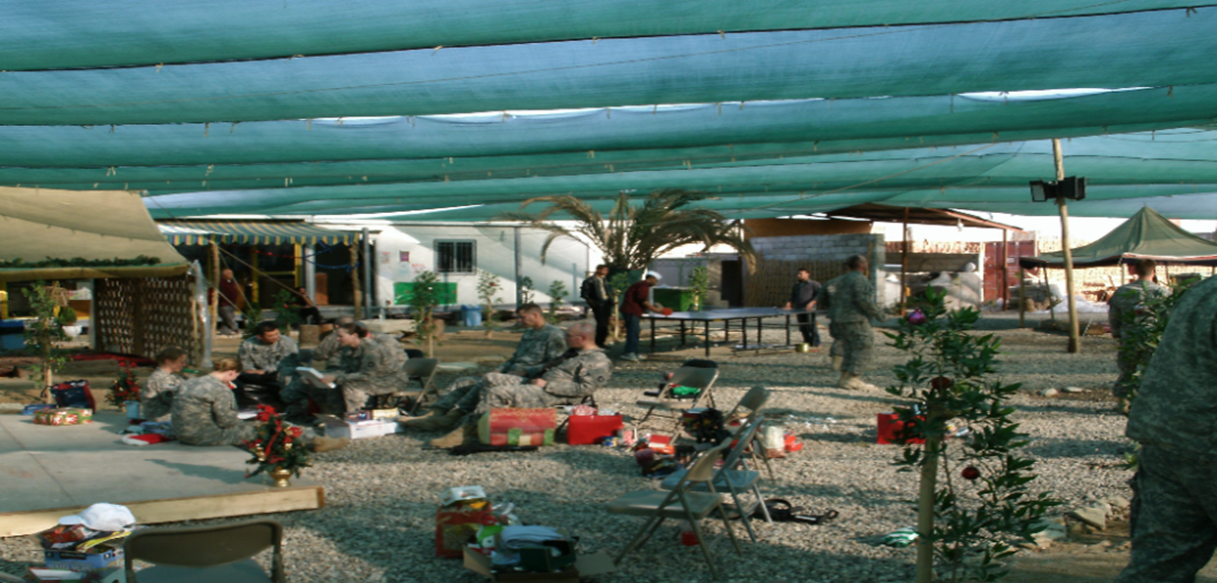
Engagement builds trust and offers solutions:
Although the structural comparison of Iraq and COVID are on opposite ends of the spectrum, many of their negative aftereffects are eerily similar. Both require engagement buy-in and proper resourcing from the top of the organization’s leadership teams; without this, mid-level managers and leaders (like our CMO team in Iraq) would have been relegated to outdated tactics that were not effective for the situation. Many of today’s businesses and industries are faced with extreme levels of isolation, burnout, misgivings, and changes in general working attitudes that require the buy-in of their rank and file. The rules of engagement, as it relates to the entrepreneurial “Battle for Talent”, are and will drastically alter our approaches to managing workforces for the now and as we reach into the future.
Today’s major oversight committees and organizations are asking for more reporting and visibility into Stakeholder Capitalism. Measurements of fiscal success such as market share and profits will be supplemented with investigating retention rates, corporate social responsibility, and human capital assessments. Those who ignore this or take it for granted will be exposed, but the onus to provide such an environment should not come from the need to report and instead should be embraced because it is simply good business for the modern environment.
Workforces in a hybrid-remote model and others with structural DNA remodeling face challenges that will not be solved overnight. Experts in organizational leadership have modern software, strategies, and human services readily deployable to meet the key pillars of engagement. With the exiting of the Baby Boomers and all the institutional knowledge they carry, skilled talent and labor will become sparser. Put the necessary resources in the hands of your people and give them something they can call their own: make engagement “a thing” with relevant return on investment measures.
Engagement leads to collaboration, pride in your organization, and a steadfast following with predictably exceptional rates in retention. We were able to prove this model works even in the darkest of situations, and it will work for the post-pandemic world if properly resourced and embraced. Financing your own “transformative bazaar” will forge a more cohesive, confident, and collaborative following of loyal and engaged employees.
For More Information
Aaron D. Meyers
General Manager, Transcend Engagement, LLC
aaron@transcendengagement.com